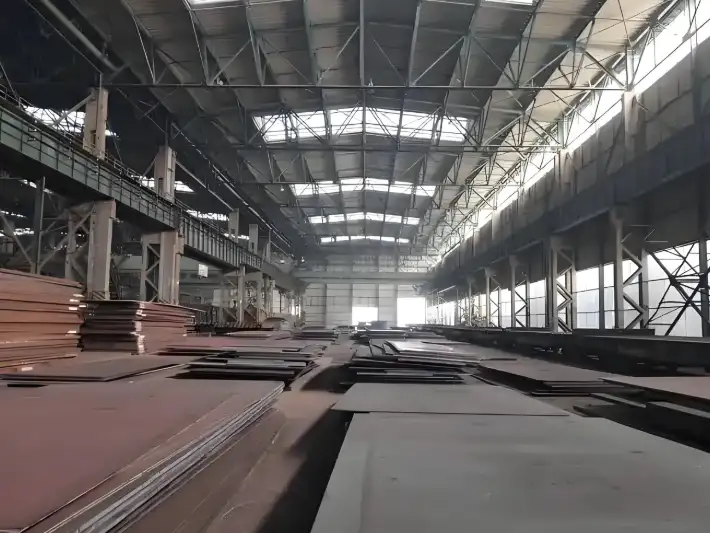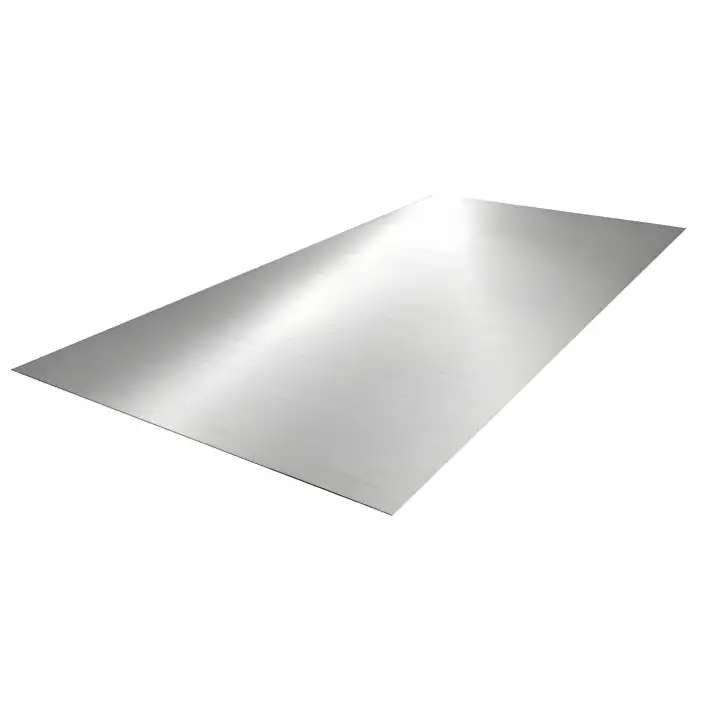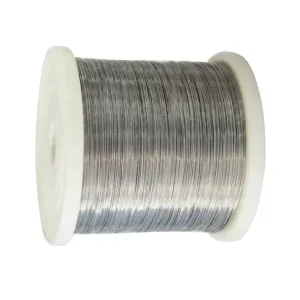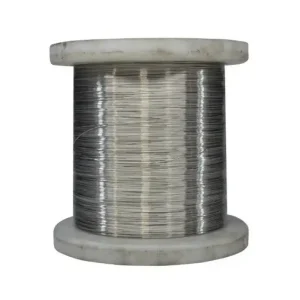A480/A480M outlines the general requirements for stainless steel plate, sheet, and strip. It applies to all stainless grades in plate form. We rely on it when selecting material for demanding environments. Why choose it? Because it balances corrosion resistance with formability. It also offers consistent mechanical strength.
Standard Overview & Hierarchy
| Parameter | ASTM A480/A480M-2025 Specification | Notes |
|---|---|---|
| Scope | General requirements for 8 product specs: A240/A240M, A263, A264, A265, A666, A693, A793, A895 | Excludes pipes, bars, or structural shapes |
| Conflict Priority | 1. Purchase Order > 2. Product Spec > 3. A480 | Orders cannot waive mandatory tests |
| Unit Systems | • Imperial (A480): inch-lb • Metric (A480M): SI units • Critical: Systems must be used independently |
Mixing units voids compliance |
| Effective Date | March 15, 2025 | Replaces A480/A480M-24a |
Thickness Tolerances
(Vary by width, thickness, and processing method)
| Nominal Thickness | Width ≤ 1525mm (60") | Width > 1525mm (60") | Critical Application (e.g., Aerospace) |
|---|---|---|---|
| Hot-Rolled Plate | |||
| 3.3 mm (0.13") | ±0.27 mm (±0.011") | ±0.38 mm (±0.015") | ±0.15 mm (±0.006") |
| 12.7 mm (0.5") | ±0.41 mm (±0.016") | ±0.61 mm (±0.024") | ±0.20 mm (±0.008") |
| Cold-Rolled Sheet | |||
| 2.5 mm (0.1") | ±0.10 mm (±0.004") | ±0.15 mm (±0.006") | ±0.05 mm (±0.002") |
| 6.0 mm (0.25") | ±0.13 mm (±0.005") | ±0.18 mm (±0.007") | ±0.08 mm (±0.003") |
💡 Key Insight: Tolerances widen with increasing width/thickness. For critical applications, specify "Precision Tolerance" in purchase orders.
Mechanical Properties
(Minimum requirements for common grades)
| Grade | Condition | Tensile Strength (MPa) | Yield Strength (MPa) | Elongation (%) | Hardness (Max HRB) |
|---|---|---|---|---|---|
| 304 | Annealed | 515 | 205 | 40 | 92 |
| 316L | Annealed | 485 | 170 | 40 | 95 |
| Duplex 2205 | Solution Annealed | 620 | 450 | 25 | 100 |
| 410 | Annealed | 415 | 205 | 20 | 89 |
Chemical Composition Tolerances
(Finished product analysis allowances)
| Element | Specified Range | Permissible Variation (±%) | Notes |
|---|---|---|---|
| Cr | 18.0–20.0% | 0.15% | Critical for corrosion resistance |
| Ni | 8.0–11.0% | 0.07% | |
| C | ≤0.08% | 0.01% | Tighter than older editions (0.02%) |
| P | ≤0.045% | 0.005% | Reduced for improved weldability |
| S | ≤0.030% | 0.005% | |
| Mo | 2.0–3.0% | 0.05% | Key for 316/2205 grades |
Processing & Testing Requirements
| Parameter | Specification |
|---|---|
| Melting Process | EAF (Electric Arc Furnace) + AOD (Argon Oxygen Decarburization) or equivalent |
| Solution Annealing | 1050–1150°C (1922–2102°F), rapid quench per grade requirements |
| Surface Finish | • Hot-Rolled: No.1 (Annealed & pickled) • Cold-Rolled: No.2B (Bright annealed) |
| Mandatory Tests | • Tensile/Hardness 1 • Intergranular Corrosion (per ASTM A262/A763) • Phase Detection for Duplex (per ASTM A923) |
| Certification | Mill Test Reports (MTRs) with heat treatment records and traceability |
Dimensional Classifications
| Product Type | Thickness | Width | Definition |
|---|---|---|---|
| Plate | ≥5.0 mm (0.197") | >250 mm (10") | Processed per Section |
| Sheet | <5.0 mm (0.197") | ≥600 mm (24") | Includes "as-rolled" or cut lengths |
| Strip | <5.0 mm (0.197") | <600 mm (24") | Cold-rolled only |
-
Tolerance Overrides: For widths >2000mm, specify EN 10029 Grade B tolerances in purchase orders (permitted by A480 Annex).
-
MTR Requirements: 2025 edition mandates reporting of Boron (B) & Cobalt (Co) trace elements.
-
Surface Defect Limits: No.2B finish allows ≤0.1mm depth scratches; critical apps require No.4 (brushed) or BA (bright annealed).
-
Retest Protocol: Failed tests allow 2 retests per heat lot—samples must be adjacent to original test piece.
Mechanical Properties
We summarize the mechanical benchmarks per ASTM A480/A480M:
-
Tensile Strength: ≥ 515 MPa (75 ksi).
-
Yield Strength: ≥ 205 MPa (30 ksi).
-
Elongation: ≥ 40% in 2 in.
when subjected to cold rolling followed by annealing, A480M plates exhibit superior formability.

Manufacturing & Surface Treatments
The typical production sequence is:
-
Hot Rolling: imparts basic shape.
-
Annealing: restores ductility.
-
Pickling: removes oxides.
-
Cold Rolling (optional): achieves tight tolerances.
Performance Comparisons (Table)
We compare A480/A480M against similar grades:
| Property | A480/A480M (304) | 316 (A480) | 430 (A480) |
|---|---|---|---|
| Tensile (MPa) | 515 | 515 | 450 |
| Yield (MPa) | 205 | 215 | 275 |
| Corrosion Rating | Excellent | Superior | Good |
| Cost Index (Base=1) | 1.0 | 1.3 | 0.8 |
Global Price Comparison 2025 – A480/A480M Stainless Plate (304 Grade)
| Region | Price (USD/ton) | Notes & Source |
|---|---|---|
| China | $1,230 – $1,962 | Hot-rolled 304 H/316Ti, 8–16 mm, CIF/FOB |
| United States | $3,200 – $3,800 | Based on $180 – $215 per ft² (0.125″ thickness → ~21 lb/ft² → ~$3,200–3,800/ton) | |
| India | $2,500 – $3,100 | INR 200–250/kg → ~$2,500–3,100/ton | |
| Europe | $3,000 – $3,600 | Estimated based on U.S. and India regional premiums; similar to EU domestic market reports | |
⚙️ Context & Analysis
-
China's pricing is highly competitive, ranging from $1,230 to $1,962/ton for hot-rolled A480/A480M Grade 304H & 316Ti plates.
-
U.S. pricing is taken from online metal distributors offering 304 stainless plate at $180–215/ft² (~0.125″ thick). Converted using ~21 lb/ft² yields roughly $3,200–3,800 per ton.
-
India's prices quoted in INR translate to approximately $2,500–3,100 per ton, reflecting lower regional production costs .
-
European prices typically align with U.S. levels due to similar market structure and cost base (e.g., energy, labor, tariffs).
Applications & Industry Use
We employ A480/A480M plates in:
-
Food processing equipment
-
Architectural panels
-
Chemical tanks
-
Automotive trim
Quality Assurance & Testing
We conduct:
-
Ultrasonic Inspection
-
Surface Roughness Measurement
-
Hardness Tests (Rockwell B)
-
Dimensional Verification
Moreover, traceability is logged from melt to finished plate.
Standards & Compliance
Beyond ASTM A480/A480M, related standards include:
-
A276 (bars)
-
A666 (sheet)
-
A182 (forged fittings)
We adhere strictly.
Handling, Storage & Maintenance
Store in dry conditions. Protect from contaminants. Use VCI paper for extended storage.
Environmental & Sustainability Considerations
Recycling rate for stainless steel exceeds 90%. We support circular economy goals. Stainless plate often contains 60% recycled content.
FAQs
1. What is the difference between A480 and A480M stainless plate?
We adhere to ASTM A480/A480M, which outlines the general requirements for stainless steel plates. A480 refers to the specification itself, while A480M is the metric version—same technical standards, different unit systems. This ensures global compatibility and ISO metric compliance.
2. Which surface finishes are available for A480/A480M plates?
We supply several finishes, each suiting different needs:
-
No. 1 (hot‑rolled): mill finish for heavy fabrication
-
2B (cold‑rolled): smoother surface for drawing/forming
-
#4 (brushed): decorative, typical in architectural contexts
-
BA (bright annealed): mirror-like finish for industrial and aesthetic use
3. Is A480M stainless plate fit for welding without preheating?
Yes. A480/A480M stainless steels (e.g. ASTM 304) can be welded using common processes like GTAW or GMAW without preheat. However, for corrosion-critical or pressure-rated systems, we recommend post-weld heat treatment to restore full corrosion resistance and relieve stress.
4. Can A480/A480M plates be used in cryogenic environments?
Absolutely. Austenitic stainless grades specified under A480/A480M maintain excellent toughness at sub-zero temperatures. Performance in temperatures below –196 °C (common in LNG or aerospace systems) has been confirmed in laboratory tests and field applications.
5. What non-destructive tests do you perform for quality assurance?
We employ multiple inspections to ensure reliability:
-
Ultrasonic testing (UT) for internal defects
-
Visual surface inspection for pickling effectiveness
-
Hardness testing (Rockwell B) for mechanical consistency
-
Surface roughness (Rₐ) to verify smooth finishes
These checks adhere to ASTM E317 and AMS 2644 methods for comprehensive assurance.
6. How do you manage inventory and lead times for custom A480/A480M plate sizes?
Our lead time typically ranges from 4 to 6 weeks, depending on order size and thickness. We maintain a rolling inventory of standard 304 and 316 plates in common dimensions to meet emergency requests. Plus, every batch is fully traceable from mill to shipping.





